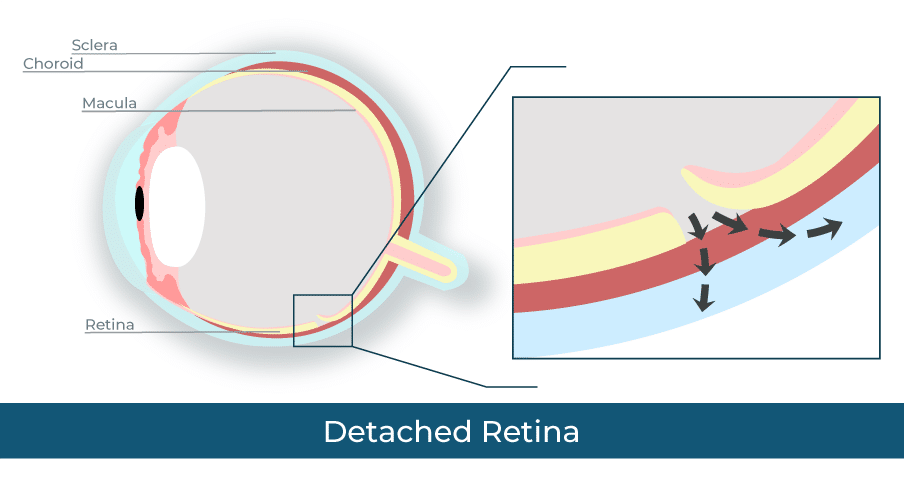What to Expect After Retinal Detachment Surgery
The recovery time for your retina surgery will depend on the specific surgery you had. Your doctor should give you an estimated recovery time, as well as what you may experience after. General things to expect after a retina surgery include:
- Discomfort and pain: Your doctor will likely give you medication to manage this.
- Eye patch: You’ll need to wear an eye patch to protect your eye. Your doctor will let you know how long you’ll need to wear it.
- Floaters and flashing lights: It’s common to see these for a few weeks after surgery.
- Rest: You’ll need to reduce your activity for a few weeks after surgery. Your doctor should tell you which activities are safe and which are not.
Risks of Retina Surgery
Retina surgery, like any type of surgery, has risks. These include:
- Bleeding in the eye
- Cataracts
- The chance that the retina doesn’t properly attach or detaches again
- Increased pressure in the eye, which can lead to glaucoma
While these risks can be scary, not treating a detached retina can cause you to lose your eyesight permanently.
Types of Retinal Detachment
Retinal detachment is categorized by cause. There are three types: Exudative, rhegmatogenous, and tractional.
Exudative Retinal Detachment
Exudative retinal detachment is caused by a build-up of fluid behind your retina that pushes the retina away from the back of your eye. This causes the retina to detach but doesn’t cause tears or breaks in the retina.
This fluid build-up is usually the result of leaking blood vessels or swelling. This can be caused by:
- Age-related macular degeneration
- Coats disease
- Diseases that cause eye inflammation
- Eye injury or trauma
- Tumors in the eye
Rhegmatogenous Retinal Detachment
Rhegmatogenous retinal detachment is the most common kind of retinal detachment. It’s often the result of aging. As you age, the vitreous fluid, which is the jelly-like fluid inside your eye, begins to shrink. This shrinking can cause it to tug on your retina, tearing it. When the retina tears, vitreous fluid can get behind your retina and push on it, which detaches the retina.
Other causes of rhegmatogenous retinal detachment include eye injuries, eye surgery, and nearsightedness.
Tractional Retinal Detachment
Tractional retinal detachment is the result of scar tissue on the retina pulling the retina out of position. The most common cause of this is diabetic retinopathy, which can cause scarring on the retina. Other causes may include eye diseases or infections or swelling inside the eye.
Retina Surgery Centers in Arizona
We offer retina examinations and consultations across Metro Phoenix, Northern Arizona, and Southern Arizona. We want to make sure your experience is convenient and easy. Our eye surgeons also perform retina procedures at our own surgery centers. Learn more about our Ophthalmology locations.


